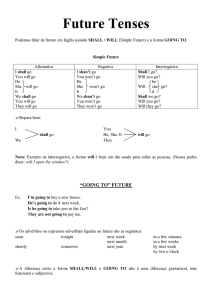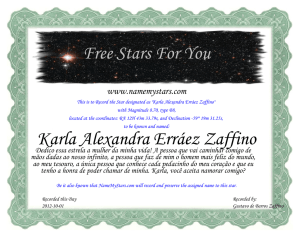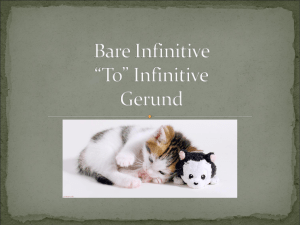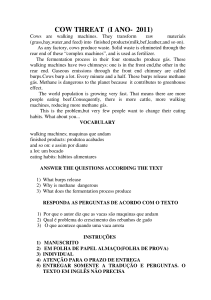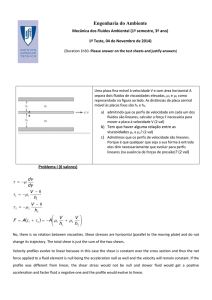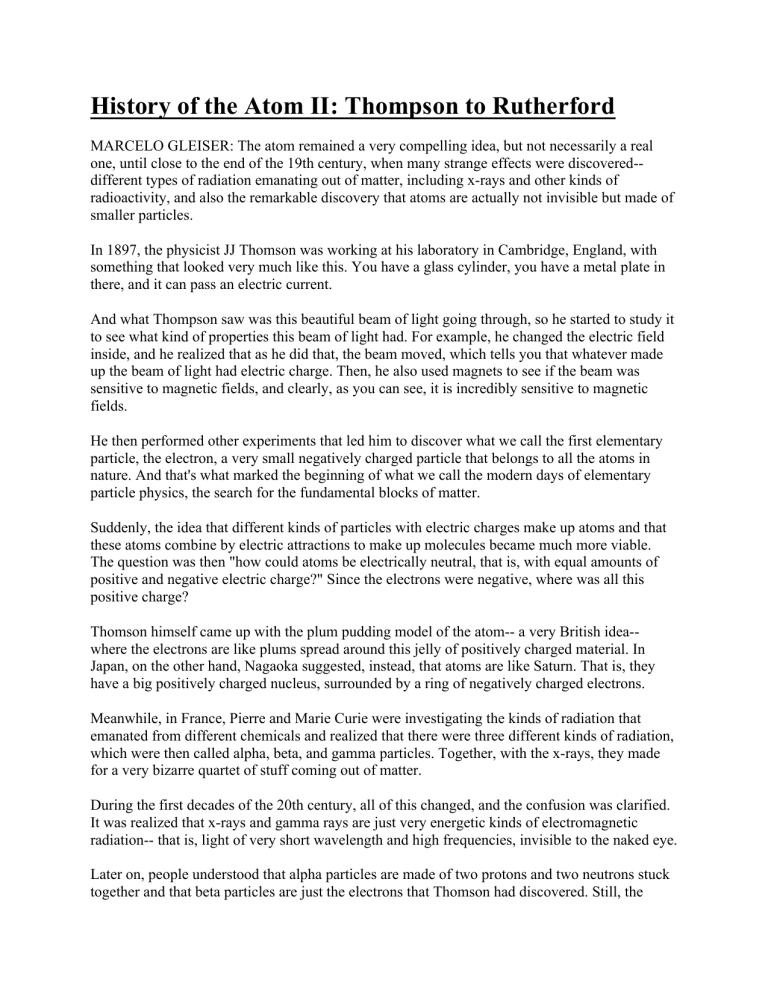
History of the Atom II: Thompson to Rutherford
MARCELO GLEISER: The atom remained a very compelling idea, but not necessarily a real
one, until close to the end of the 19th century, when many strange effects were discovered-different types of radiation emanating out of matter, including x-rays and other kinds of
radioactivity, and also the remarkable discovery that atoms are actually not invisible but made of
smaller particles.
In 1897, the physicist JJ Thomson was working at his laboratory in Cambridge, England, with
something that looked very much like this. You have a glass cylinder, you have a metal plate in
there, and it can pass an electric current.
And what Thompson saw was this beautiful beam of light going through, so he started to study it
to see what kind of properties this beam of light had. For example, he changed the electric field
inside, and he realized that as he did that, the beam moved, which tells you that whatever made
up the beam of light had electric charge. Then, he also used magnets to see if the beam was
sensitive to magnetic fields, and clearly, as you can see, it is incredibly sensitive to magnetic
fields.
He then performed other experiments that led him to discover what we call the first elementary
particle, the electron, a very small negatively charged particle that belongs to all the atoms in
nature. And that's what marked the beginning of what we call the modern days of elementary
particle physics, the search for the fundamental blocks of matter.
Suddenly, the idea that different kinds of particles with electric charges make up atoms and that
these atoms combine by electric attractions to make up molecules became much more viable.
The question was then "how could atoms be electrically neutral, that is, with equal amounts of
positive and negative electric charge?" Since the electrons were negative, where was all this
positive charge?
Thomson himself came up with the plum pudding model of the atom-- a very British idea-where the electrons are like plums spread around this jelly of positively charged material. In
Japan, on the other hand, Nagaoka suggested, instead, that atoms are like Saturn. That is, they
have a big positively charged nucleus, surrounded by a ring of negatively charged electrons.
Meanwhile, in France, Pierre and Marie Curie were investigating the kinds of radiation that
emanated from different chemicals and realized that there were three different kinds of radiation,
which were then called alpha, beta, and gamma particles. Together, with the x-rays, they made
for a very bizarre quartet of stuff coming out of matter.
During the first decades of the 20th century, all of this changed, and the confusion was clarified.
It was realized that x-rays and gamma rays are just very energetic kinds of electromagnetic
radiation-- that is, light of very short wavelength and high frequencies, invisible to the naked eye.
Later on, people understood that alpha particles are made of two protons and two neutrons stuck
together and that beta particles are just the electrons that Thomson had discovered. Still, the
structure of the atom remained a mystery until 1911, when Ernest Rutherford started his
experiments to try to answer this question.
To study the structure of the atom, Rutherford set up a brilliant experiment. He hung a paper-thin
leaf of gold to be hit by a flow of alpha particles that acted like tiny little bullets. He wanted to
see if the alpha particles would fly through or recoil from the collision. So he surrounded the
gold foil with detectors that could see where the alpha particles had gone.
To his amazement, he found that most of the alpha particles went right through the gold foil, but
some would actually recoil almost in the same direction that they hit, as if somehow they hit
something incredibly hard and heavy right at the gold leaf.
Rutherford concluded that atoms are basically mostly empty space, which explains why the alpha
particles would fly through but that, at the very core, they have a very massive positively charged
nucleus. Rutherford called the positive electric particle at the center "protons."
This is when the simple solar system model of the atom was born, where an atom is made of a
hard small positive nucleus, surrounded by little electrons that look like planets orbiting the sun.
Of course, this is a very simplistic model of the atom. Still, scientists had figured out that atoms
are breakable and made of tiny electrically charged particles. But they had only begun to scratch
the surface.
História do átomo Parte II: Thompson a Rutherford
MARCELO GLEISER: O átomo continuava uma ideia atraente, mas não necessariamente uma
ideia real, até perto do fim do século XIX, quando vários efeitos estranhos foram descobertos-diferentes tipos de radiação emanando da matéria, incluindo raios X e outros tipos de
radiatividade, e também a marcante descoberta de que átomos não eram de fato invisíveis, mas
feitos de partículas menores.
Em 1897, o físico JJ Thomson estava trabalhando em seu laboratório em Cambridge, Inglaterra,
com algo que parecia muito com isso. Aqui tem um cilindro de vidro e dentro tem uma placa de
metal que passa uma corrente elétrica.
E o que Thompson viu foi esse lindo raio de luz atravessando, então ele começou a estudar para
ver que propriedades esse raio de luz tinha. Por exemplo, ele mudou o campo elétrico dentro e
percebeu que, quando ele fazia isso, o raio se movia, o que mostra que o que quer que criava o
raio de luz tinha uma carga elétrica. Então, ele também usou ímãs e, como você pode ver, ele viu
que os raios eram incrivelmente sensíveis a campos magnéticos.
Ele então realizou outros experimentos que o levaram a descobrir o que nós chamamos de
primeira particular elementar, o elétron, uma partícula negativamente carregada muito pequena
que pertence a todos os átomos da natureza. E isso iniciou o que nós chamamos "A modernidade
da física de partículas elementares, a busca pelos blocos fundamentais da matéria”
Subitamente, a ideia de que diferentes tipos de partículas com cargas elétricas formavam átomos
e que esses átomos combinados com atrações elétricas para criar moléculas se tornaram muito
mais viáveis. A pergunta então era "como os átomos poderiam ser eletricamente neutros, isto é,
com iguais quantidades de carga elétrica positiva e negativa?" Como os elétrons eram negativos,
onde estava toda a carga positiva?
O próprio Thomson surgiu com o modelo do pudim de ameixa do átomo-- uma ideia muito
Britânica-- onde os elétrons são como ameixas espalhas ao redor dessa geleia de material
positivamente carregada. No Japão, por outro lado, Nagaoka sugeria, ao invés disso, que os
átomos são como Saturno. Isto é, eles tem núcleos grandes positivamente carregados, cercados
por um anel de elétrons negativamente carregados.
Enquanto isso, na França, Pierre e Marie Curie estavam investigando os tipos de radiação que
emanavam de diferentes químicos e perceberam que havia três tipos diferentes de radiação, os
quais foram então chamados de partículas alfa, beta e gama. Juntos, com os raios X, eles
formavam um quarteto muito bizarro de coisas que saíam da matéria.
Durante as primeiras décadas do século XX, tudo isso mudou e a confusão foi clarificada.
Percebeu se que os raios X e raios gama são apenas tipos muito energéticos de radiação
eletromagnética-- isto é, luz de cumprimento de onda muito curto e altas frequências, invisíveis a
olho nu.
Mais tarde, as pessoas entenderam que partículas alfa são feitas de dois prótons e dois nêutrons
presos juntos e que partículas betas são apenas os elétrons que Thomson descobrira. Ainda
assim, a estrutura do átomo permaneceu um mistério até 1911, quando Ernest Rutherford
começou seus experimentos para tentar responder a essa pergunta.
Para estudar a estrutura do átomo, Rutherford organizou um brilhante experimento. Ele pendurou
uma folha de ouro, fina como papel, para ser atingida por um fluxo de partículas alfa que agiam
como minúsculas balas. Ele queria ver se as partículas alfa atravessariam ou ricocheteariam pela
colisão. Então ele cercou a folha de ouro com detectores que poderiam ver onde as partículas alfa
haviam ido.
Para sua surpresa, ele descobriu que a maioria das partículas alfa atravessavam a folha
diretamente, mas algumas de fato ricocheteavam quase na mesma direção em que batiam, como
se de alguma forma elas batessem em algo incrivelmente duro e pesado bem na folha de ouro.
Rutherford concluiu que os átomos são principalmente espaços vazio, o que explica o porquê das
partículas alfa atravessarem mas, bem no centro, eles terem um núcleo grande e positivamente
carregado. Rutherford chamou as partículas elétricas positivas no centro de "prótons".
Foi quando o modelo de sistema solar simples do átomo nasceu, no qual um átomo é feito de um
núcleo positivo pequeno e duro, cercado por pequenos elétrons que parecem com planetas
orbitando o sol. Claro, isso é um modelo muito simplista do átomo. Ainda assim, os cientistas
haviam descoberto que os átomos são quebráveis e feitos de minúsculas partículas eletricamente
carregadas. Mas eles apenas haviam começado a arranhar a superfície.



